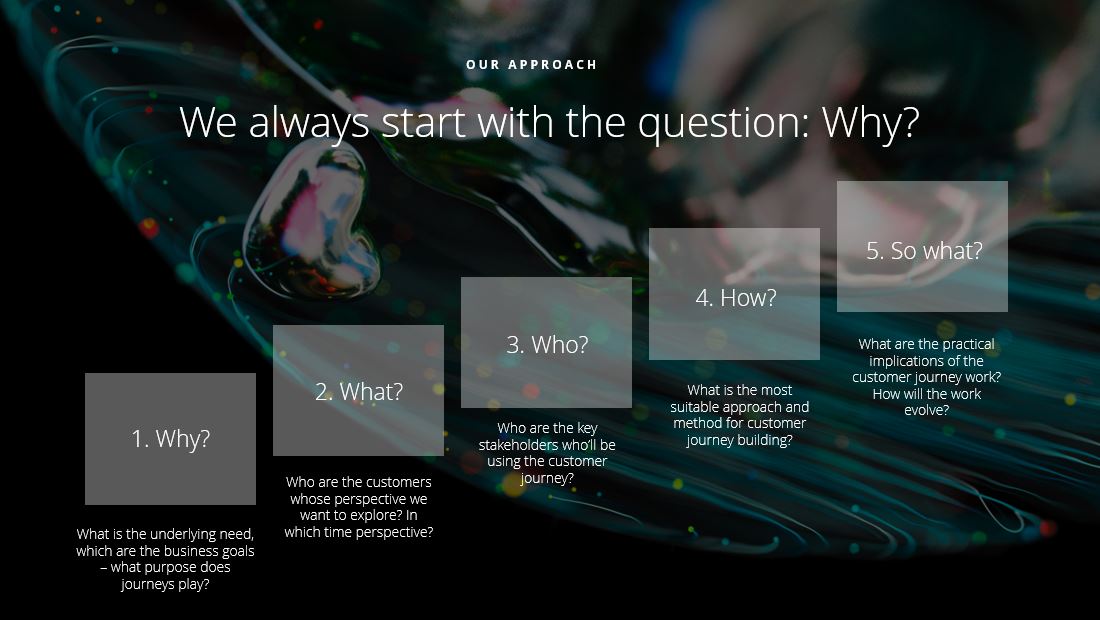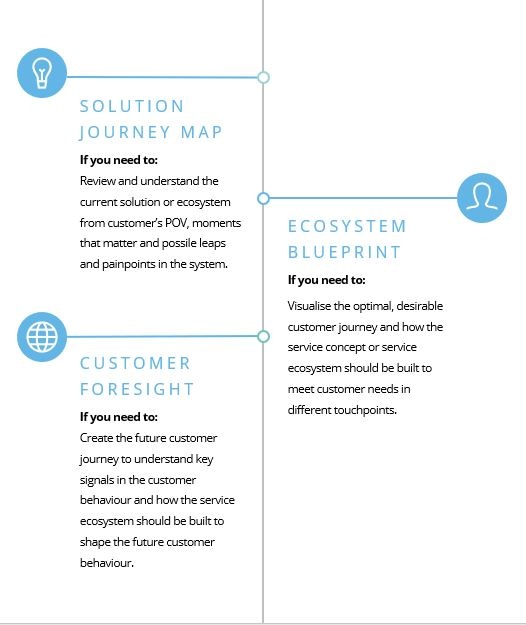Artikkeli

Even the highest quality product is no longer enough these days - the essence of long-term success is in understanding the customer experience
Companies operating in a small competitive field may think they know the customer inside out. However, often a well-executed customer journey mapping reveals blind spots that hadn't been thought of before.
A good product surely sells itself – the idea sits tight but is helplessly behind its times. Especially with niche market high tech products SMEs and startups, it is often the case that there is a lot of “silent information” about the market and knowledge within the company, but no real previous customer research to support the sales. Hence it is often the case that companies lack a systematic way to collect, describe and utilize customer understanding, which is why opportunities remain unexploited.
Different approaches to customer journey mapping
Customer Journey mapping is not a collection of nicely visualized slides, that can be stored in the files with an eased mind. Rather it is a concrete and value adding tool that allows companies to gain a deeper understanding of their customers' needs, pain points and wants throughout the entire experience of interacting with the business.
“The outcome of a customer journey mapping can make a very profitable difference to the company. It serves as a guide on how different business units, systems and channels should be built to support the customers' experience throughout the service journey and help us in understanding customers' motivations at certain touchpoints” Olli Copeland summarizes the Deloitte Digital approach to customer journey mapping.
As one size does not fit all, also the customer journey mapping methodologies should be tailored to meet the current needs of the company. As a starting point, it is important to establish a consensus on a few principal questions. These questions cover topics like, what purpose do the journeys play for the business? Whose perspectives do we want to explore? Who will use the customer journeys and how?
There are multiple methodological paths to take depending on the starting point:
“What is common for all these paths is a deep dive discovery and understanding through human insight. This understanding is best achieved by immersing yourself in the lives of the subject, usually by utilizing qualitative research methods such as contextual interviews or observation. These methods can also be used to validate any hypotheses or assumptions we might have about the customers' behavior”, Copeland explains.
Summarizing the main benefits of customer journey mapping
Customer journey mapping requires investing time and resources, but the process will pay off in the long run. Understanding the customers’ pains and gains, and why they choose a certain product or service sets effective starting points not only for improving the customer experience and retention but also sales experience and product development.
Customer insights and understanding their behavior helps the brand to stay relevant and develop the product as customer needs change and competitive advantage is ensured amid transformation.
Customer journey mapping is also very much about converting to more sales and increasing profitability. Understanding the journey helps in gaining new customers and engaging the existing ones and developing cross-selling and upselling to generate more revenue.
“Customer journey mapping usually reveals aspects of experience that might not have been in plain sight from merely looking at historical sales data. Therefore, it provides a great tool for companies to put their customers in the centre and differentiate their offering to stand out in a crowded market”, Copeland summarises.



